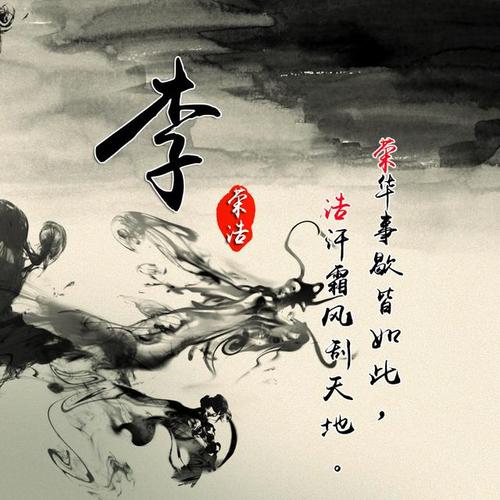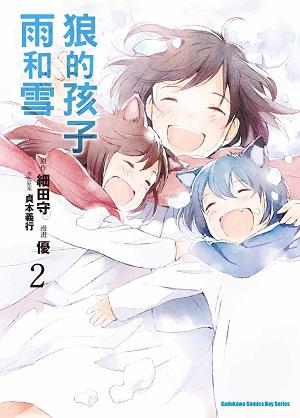请问:香港科技大学 博士如何申请
 泛而若辞
泛而若辞 白之恋
白之恋
申请的一般手续:1,索取申请表格或者在线报名:一般来说,只要发一个电子邮件给招生办公室或者系里,对方便会寄来有关表格。香港的大学会要求你说明自己的研究意向,当然只要一个很宽泛的范围即可,无须非常具体。材料一般是免费的,如果觉得麻烦,可以在线报名。2,申请材料:1)学业成绩单:须经过原校的认可签注。 2)毕业证书副本;3)学历资格证明:硕士学位证书。4)推荐信。必须是本人硕士毕业院校咨询人的两封推荐信,但必须是学术领域中的人,其他人则不被接受。推荐信是一、两份表格,而不是洋洋洒洒的一大篇。其内容是对你学术才能的评价。此外还要求对你的研究计划做出评价和建议,这一点也不应忽视。推荐信可以由推荐人直接寄往院系,或者密封加签后连同其他申请材料一起寄出;5)身份证或护照或港澳通行证复印件;6)报名费收据(网上报名及信用卡交费的可不用提供);7)英文水平证明:一般应具有托福或ETS的成绩。寄送成绩,有些大学如甚至不一定要托福成绩,大陆的四、六级证书也可接受。8)GRE成绩:随着竞争的激烈,香港的大学现在又要求GRE成绩,与托福一样,只需复印件即可。9)各学部要求的其他材料:比如研究论文。拓展资料申请香港各大学的博士,一个最基本的方法是直接与某位教授联系,各大学研究院的网站上都公布有学部联系人或称入学顾问的名字和联系方式。初期你可以先与其联系询问一些具体程序问题。如果觉得你有可能录取,他会推荐你和相应学科的教授也就是你未来的导师联系。这时你可将你确定研究的题目、方法等,取得教授的同意后递交上去。这时如果你能引起教授的注意,请他为你提意见甚至给你修改,那么成功的几率就很大了。参考资料:香港科技大学_百度百科
深圳大学计算机硕士研究生毕业,想申请去香港科技大学读计算机博士研究生,需要什么条件?
 荀彧
荀彧 坏爸爸
坏爸爸
同学根据院校官网上的要求申请即可~初级会计精讲600题(全科共两本书)自学必备习题册¥9元2020年HRBP-入门指导班HRBP必备六大核心¥免费2020年执业药师-零基础套餐五位一体闭环教学¥12802020年二级建造师-密训冲刺班考前密训冲刺10页纸¥3512020初级经济师-强化班自学必备习题册¥免费初级会计精编教材(全科共两本书)2本精编教材学会考点¥9元查看更多官方电话官方服务官方网站免费直播课免费领课领优惠券
香港科技大学博士申请
 不近富贵
不近富贵 日月之光
日月之光
同专业的话,你有可能被对冲掉部分学分的,但你当前的硕士学位也可能完全不受认可的版,这也是很正常的权.这个东西具体你的导师会根据你的面试情况和RP方向定度的.相关政策你可以邮件问你所申请的department.我估计,可能是这种情况,即研究生不分硕博,即使是本科生也是直接申请博士。这样的话我觉得你可以和对方的教授谈谈条件,看能否让你在3年内毕业。
香港科技大学研究生申请要求相关
 百慕大
百慕大 宏大而辟
宏大而辟
香港各间大学都为全日制的研究型硕士提供全额奖学金,每个月的金额超过12000港币,相当于香港大学毕业生的基本工资。除此之外,大学的学术委员会还会赞助研究型的硕士到世界各地参加各种学术会议、接受各类学术培训,以确保他们的科研项目在国际学术界处于前沿地位。 所以,香港大学研究生申请需要学生对自己的锻炼目的做出判断和制定。 研究型的香港大学研究生申请过程中,不仅需要提供语言成绩、本科成绩单、教师推荐信,而且还需要递交一份详细的研究计划(Research Proposal)。研究计划不仅需要符合国际学术界通用的格式,而且还要求所选的课题具备一定的前沿性和可操作性。申请人必须在研究计划中充分证明自己对该学科的了解,以及自己的课题可能对该学科产生的推动作用。内地的本科毕业生往往罕有学术研究的经验,因此大部分研究计划都很难进入到复选阶段。香港研究生申请很容易止步于此。研究生通常在每年的第四季度招收次年9月入学的学生,具体的申请时间在11-12月,有些学校递交申请的时间可以延长至次年的3月底。 应尽早准备申请材料和递交申请,以保证学校有足够的名额招生。学校会在次年的第二季度发放录取结果,也就是常说的Conditional Offer,达到上面所列要求后录取即自动生效。研究型研究生通常会有补助金,或者称作研究经费,一般的标准是博士研究生每月15000港币,硕士研究生每月12500港币(实际数目依学校和专业而不同)。这个数目对于一般的学生足以完成学业。授课式研究生不参与研究工作,所以没有补助可拿,通常在学业中期有奖学金可以申请。奖学金的数目差别就比较大了,而且数目很少,如果计划修读授课式研究生,要做好“没有奖学金也能完成学业”的打算。
申请香港科技大学授课研究生 电子工程条件 急急急。。。。
 黍苗
黍苗 虽落其实
虽落其实
通常申请研究式研究生才需要和导师取得联系,研究计划的话真的要看你自己针对的方向是什么。但如果你是申请授课式的话,这个并不是主要考察的。在校成绩和英语成绩反而更重要一点。授课式研究生和研究式研究生学历上是一样的。大陆就业也是认可的。今后出国发展的话,授课式会有一些限制,因为授课式是以授课为主的,做研究的时间并不多。我不是很清楚科大金融专业是否有研究式的研究生,如果你意向是读博士的话,最好先搞清楚这点,如果有研究式的研究生,最好还是申请那个,跟固定的导师做研究,将来申博会有一定优势。如果有什么不懂,可以发消息给我香港有六所比较好的大学:香港中文大学、香港大学、香港理工大学、香港城市大学、香港科技大学和香港浸会大学,其中中文大学和香港大学建校较早。申请香港的大学与申请美国大学的程序大致差不多,但也有不同之处。下面大致介绍一下。 首先,可以到网上去查询一下各大学的情况,如系科分配、奖学金多少等,以确定申请的目标。如香港大学的网址是,城市大学为。 确定目标之后便开始正式申请。香港大学的研究生的申请一般需要以下材料: 1.本科成绩单:中英文的各一份,并须经过学校公证。 2.英文水平证明:一般应具有托福成绩。与美国不同的是,香港的大学并不要求一定要ETS寄送成绩,而是只要原件的复印件即可。有些大学如甚至不一定要托福成绩,大陆的四、六级证书也可接受。不过一个好的托福成绩显然更有竞争力。 3.GRE成绩:随着竞争的激烈,香港的大学现在又要求GRE成绩,与托福一样,只需复印件即可。这两项可以为我们节省25美元。 4.申请表格:一般来说,只要发一个电子邮件给招生办公室或者系里,对方便会寄来有关表格。不过与美国不同的是,香港的大学会要求你说明自己的研究意向,当然只要一个很宽泛的范围即可,无须非常具体。材料一般是免费的,如果觉得麻烦,甚至可以从网上下载。 5.研究计划:这是与美国大学不同的一点,也是最重要的一点。这与美国的大学要求的 PERSONAL STATEMENT完全不同,研究计划(RESEARCH PROPOSAL)是纯学术的,无须加入诸如个人经历、感情这些东西。它要求申请者要有一个明确的研究方案并对此有较好的掌握。这个计划必须是非常具体的,不能太宽泛。研究计划一般包括以下几点: (1)研究对象(TOPIC),即你想要解决的问题 (2)研究此问题的意义 (3)前人的研究状况即遗留的问题 (4)你的研究方法(METHODOLOGY) (5)参考文献(BIBLIOGRAPHY):这一点很重要,但往往会被忽视。 一般来说,系里会建议你先与某位教授联系,确定研究的题目、方法等,取得教授的同意后,在递交正式的计划。当然,如果你能引起教授的注意,请他为你提意见甚至给你修改,那么成功的几率就很大了。 6.推荐信:香港大学一般只要两封推荐信,但必须是学术领域中的人,其他人则不被接受。推荐信是一、两份表格,而不是洋洋洒洒的一大篇。其内容是对你学术才能的评价。此外还要求对你的研究计划做出评价和建议,这一点也不应忽视。 7.此外就剩下申请费(APPLICATTON FEE)了。香港的大学申请费比美国低得多,一般一两百港币,一般人均能承受。 申请时要注意的是,如果想得到奖学金,必须申请全日制 (FULL-TIME)。香港的生活水平很高,学费加申请费至少需要一万港币每月,一般人肯定读不起,不过如果得到STUDENDSHIP的话(每月约一万四到一万五港币),所有开销便无须担心了。1、一般是看平均分,然后再看专业课成绩(核心还是选修不一定,学院根据需要来挑)一般211学校均分85以上就有希望2、港科大9月就能申请了,一般11月,12月左右最佳3、授课制一般是一年,有可能一年半,看到时候选课情况,肯定比内地大学省时间4、更建议雅思这么说我的成绩条件还不是很够吖。。。不过已经在准备了,谢谢您~
去香港念博士要几年
 大名府
大名府 国仲
国仲
一般情况下是3年或4年。扩展资料:申请材料:1、学业成绩单:须经过原校的认可签注。2、毕业证书副本;3、学历资格证明:硕士学位证书。4、推荐信。必须是本人硕士毕业院校咨询人的两封推荐信,但必须是学术领域中的人,其他人则不被接受。推荐信是一、两份表格,而不是洋洋洒洒的一大篇。5、身份证或护照或港澳通行证复印件;6、报名费收据(网上报名及信用卡交费的可不用提供);7、英文水平证明:一般应具有托福或ETS的成绩。寄送成绩,有些大学如甚至不一定要托福成绩,大陆的四、六级证书也可接受。8、GRE成绩:随着竞争的激烈,香港的大学现在又要求GRE成绩,与托福一样,只需复印件即可9、各学部要求的其他材料:比如研究论文。参考资料:百度百科-gre
陈光浩的香港科技大学终身教授
 理欲
理欲 其为人也
其为人也
陈光浩(Guang-Hao CHEN)博士,现任香港科技大学土木工程系终生教授、环境工程专业主任、环境工程研究生课程主任,浙江大学、中山大学客座教授,香港特区政府污水处理工程技术顾问,国际水协(IWA)污泥处理专家委员会课题组成员,国际水协水力学会(IAHR)下水道联合专家委员会理事,《Water Research》副主编,《IWA Journal:AQUA》亚太区编委,《Water Science & Technology》专辑主编,《Water Science & Technology: Water Supply》专辑主编,《International Journal of Pollution and Environment》特邀主编,清华大学环境科学与技术学刊特邀编委。多年来出版学术专著/论文集12册,发表学术论文125篇,包括SCI论文51篇(其中26篇发表在《Water Research》等环境学科一流刊物上),EI论文5篇,获美国、英国、新加坡发明专利共3项,获日本政府、三菱公司、香港研资局、香港渠务署等研究项目近40项。E-mail: ceghchen@ust.hkTel.: (852) 2358-8752--------------------------------------------------------------------------------Current Research InterestsSustainable decentralized sewage treatment systems 可持续性非集中式城市污水处理新系统Excess sludge minimized activated sludge processes 活性污泥法剩余污泥减量方法Biofilm, denitrification and corrosion control in sewer 污水管道中污染物转化及生物膜Micro-pollutant degradation in membrane bio-reactor (MBR ) and low-cost MBR system development 膜生物处理Re-use of water treatment works sludge in sewage treatment works and phosphorus adsorption on aluminium hydroxide 自来水厂污泥在城市污水处理厂之利用及磷之吸附Courses TaughtCIVL 142 Introction of Environmental Science and EngineeringCIVL 242 Water and Wastewater EngineeringCIVL 344 Solid Waste ManagementCIVL 345 Environmental Analysis of Aqueous SystemsCIVL 346 Process Design of Environmental Engineering FacilitiesCIVL 542 Biological Waste TreatmentCIVL 543 Aquatic ChemistryCIVL 544 Process Design of Water and Wastewater Treatment SystemsCIEM 548 Wastewater Treatment and ReusePublication (2003~)Book/ Book Chapter/Journal IssueG. H. Chen, J. C. Huang, C Shang, H. H. P Fang, and Y. Watanabe (2004). Editor of the Special Issue of Creative Water and Wastewater Treatment Technologies for Densely Populated Urban Areas. Water Science and Technology: Water Supply. Vol., 04, No. 01, 166 pages.X. H. Guan, G. H. Chen, and C. Shang (2004). ATR-FTIR and XPS study on the structure of complexes formed between simple organic acids and aluminium hydroxide. In: Young Researchers 2004 (ed by P Lens and R Stuetz), Water and Environmental Management Series, IWA publisher, 2004.G. H. Chen, C. Shang, and X. R. Zhang (2006). Editor of the Special Issue of Leading-edge Strategies and Technologies for Sustainable Urban Water Management. Water Science and Technology: Water Supply. Vol., 06, No. 06, 183 pages.G. H. Chen. Water Reuse in Asia. In: International Survey of Water Reclamation and Ruse, edited by B. Jimemez and T. Asano, IWA publisher (in press).G. H. Chen and J. H. Qu (2007). Editor of the Special Issue of Research and Development of Environmental Science and Technology in China, International Journal of Pollution and Environment (in preparation).Invited Overseas Conference/Workshop Presentations/Guest LecturesG. H. Chen (2004). Novel approaches to rece excess sludge in activated sludge processes. Hokkaido University Centre of Excellence (COE) Lectures on Environmental Biotechnology, Sapporo, Japan, July 07, 2004.G. H. Chen and Chii Shang (2004). Comparison of performance of MBR in treating freshwater and seawater sewage and evaluation of virus rejection. Hokkaido University COE Workshop on Membrane Bioreactor, Sapporo, Japan, July 12, 2004.D. H. W. Leung, K. R. Sharma, and G. H. Chen (2004). Effect of detached/re-suspended solids from sewer sediment on the sewage phase bacterial activity. Keynote presentation at IWA Sponsored International Symposium on Biotechnology for Environmental Pollution Control, Beijing, China, August 14-15, 2004.G. H. Chen (2005). Applications of MBR/MF/RO in sewage reuse/recycle. Hokkaido University COE workshop on MBR, Sapporo, Japan, June 11, 2005.G. H. Chen (2005). Pilot studies of membrane technology for effluent reuse. International Conference on Nanotechnologies and Advanced Materials. Hong Kong, August 8-10, 2005.G. H. Chen (2006). Modelling of biotreatment-Theory and practice. Hokkaido University COE Lectures on Environmental Biotechnology, August 03, 2006.G. H. Chen (2006). Reuse of alum sludge in sewage treatment and phosphorus/Nom adsorption on aluminum hydroxide, Hokkaido University COE Lectures on Environmental Biotechnology, August 03, 2006.G. H. Chen (2006). Is biofilm formation the key player in bio-fouling of MBR? 1st IMECT, Sapporo, 18 August 2006, Japan.Journal PapersS. Saby, M. Djafer, and G. H. Chen (2003). Effect of low ORP in anoxic sludge zone on excess sludge proction in an oxic-settling-anoxic activated sludge process (OSA process). Water Research, 37(1), pp.11-20.Y. Chen, Y. Zhang, and G. H. Chen (2003). Appropriate conditions for maximizing catalytic rection efficiency of nitrate into nitrogen gas in groundwater. Water Research, 37(10), pp. 2489-2495.G. H. Chen, D. H. K. Leung and J. C. Huang (2003). Biofilm in the sediment phase of a sanitary gravity sewer. Water Research, 37(11), pp.2784-2788.G. H. Chen, M. T. Wong, S. Okabe, and Y. Watanabe (2003). Dynamic response of nitrifying activated sludge batch cultures to increased chloride concentration. Water Research, 37(13), pp.3125-3135.G. H. Chen, K. J. An., S. Saby, E. Brois, and M. Djafer (2003). Possible cause of excess sludge rection in an oxic-settling-anoxic activated sludge process (OSA Process). Water Research, 37(16), pp.3843-3864.X. H. Guan, Shang C, S. M. Yu, and G. H. Chen (2004). Exploratory study on reuse of water treatment works sludge to enhance primary sewage treatment. Water Science and Technology: Water Supply, 04(1), pp.159-164.G. H. Chen and M. T. Wong (2004). Impact of increased chloride concentration to nitrifying activated sludge process. Journal of Environmental Engineering, ASCE,130(2), pp.116-125.Y. Chen, Y. Zhang, G. H. Chen, and K. R. Sharma (2004). Hydrogen-based catalytic ceramic membrane for removing nitrate in groundwater. Environmental Technology, 25, pp.227-234.X. H. Guan, Q. Liu, G. H. Chen, and C. Shang (2005). Reuse of water treatment works sludge to enhance particulate pollutant removal from sewage. Water Research, 39(15), pp.3433-3440.X. H. Guan, Q. Liu, G. H. Chen, and C. Shang (2005). Surface complexation of condensed phosphate to aluminium hydroxide: An ART-FTIR spectroscopic investigation. Journal of Colloid and Interface Science, 289(2), pp.319-327.M. H. Wong, C. Shang and G. H. Chen (2005). Bacteriophage MS-2 Removal by Submerged Membrane Bioreactor. Water Research, 39 (17), pp.4211-4219.D. H. W. Leung, G. H. Chen and K. R. Sharma (2005). Effect of attached/re-suspended solids from sewer sediment on sewage phase bacterial activity. Water Science and Technology, 52(3), pp.147-152.X. H. Guan, G. H. Chen, C. Shang, and J. Zhu (2005). ATR-FTIR Investigation on the Complexation of Myo-inositol Hexaphosphate with Aluminum Hydroxide. Journal of Colloid and Interface Science, 293(2), pp. 296-302.X. H. Guan, G. H. Chen, and C. Shang (2006). Competitive Adsorption of organic matter with phosphate on aluminum hydroxide. Journal of Colloid and Interface Science, 296(1), pp.51-58.G. N. Lau, K. R. Sharma, G. H. Chen and M. C. M. van Loosdrecht (2006). Integration of sulfate rection, autotrophic denitrification and nitrification to achieve low-cost excess sludge minimization for Hong Kong sewage. Water Science and Technology, 53(3), pp.227-235.H. L. S. Tam, D. T. W. Tang, K. R. Sharma and G. H. Chen (2006). A pilot study of a membrane bio-reactor in treating fresh water sewage and saline sewage in Hong Kong (invited paper). Separation Science and Technology, 41 (7), pp.1253-1264.S. Y. C. Lee, L. M. Wang, Y. Xue, N. Ge, X. Yang, and G. H. Chen (2006). Natural estrogens in the surface water of Shenzhen and the sewage of Hong Kong. Human and Ecological Risk Assessment, 12(2), pp.301-312X. H. Guan, G. H. Chen, and C. Shang (2006). Combining kinetic investigation with surface spectroscopic examination to study the role of aromatic carboxyl groups in NOM adsorption by aluminum hydroxide. Journal of Colloid and Interface Science, 301, pp.419-427.X. H. Guan, C. Shang and G. H. Chen (2006). ATR-FTIR investigation on the role of phenolic groups in the interaction of NOM with aluminum hydroxide. Chemosphere, 65, pp.2074-2081.H. L. S. Tam, D. T. W. Tang, K R Sharma and G. H. Chen (2006). A pilot study for sewage reclamation and reuse with MBR/RO and MF/RO systems. Desalination. 202 (1-3), 106-113.X. H. Guan, G. H. Chen, and C. Shang (2006). Role of carboxylic and phenolic groups in NOM adsorption on minerals: a review. Water Science and Technology: Water Supply. 6(6), 155-164.G. H. Chen and S. K. Pang (2006). Development of a low-cost dynamic filter immersed in activated sludge system. Water Science and Technology: Water Supply. 6(6), pp.111-117.An. K. J. and G. H. Chen. A COD balance analysis of an oxic-settling-anaerobic activated sludge process. Journal of Environmental Engineering, ASCE (attentively accepted).X. H. Guan, G. H. Chen, and C. Shang. Competitive adsorption of phosphorus on aluminum hydroxide. Water Science and Technology (in press).International Conference Papers (Referred oral presentations only)X. H. Guan, C. Shang, and G H Chen (2003). Competitive adsorption of reactive, condensed, and organic phosphate on aluminum hydroxide. IWA-ASPAC 2003 Conference, October 13-18, 2003, The Philippines.D. H. W Leung and G H Chen (2004). Effect of detached/re-suspended solids from sewer biofilm on the oxygen uptake of sewage phase in a sewer. IWA 1st Asian Junior Scientist Workshop on Sewer Network Processes & Urban Drainage, 7-10 February 2004, Malacca, Malaysia.X. H. Guan, G. H. Chen, and C. Shang (2004). ATR-FTIR and XPS studies on structure of complexes formed between simple organic acids and aluminum hydroxide. The 2nd Young Researchers Conference, May 3-4 2004, Wageningen, The Netherlands.H M Wong, C Shang, and G. H. Chen (2004). Factors affecting virus removal in a membrane bioreactor. IWA Specialized Conference on Water Environment Membrane Technology (WEMT 2004), June 7-10 2004, Seoul, Korea.D H. W Leung, G. H. Chen and K R Sharma (2004). Effect of attached/re-suspended solids from sewer sediment on sewage phase bacterial activity. The 4th IWA Specialized Conference on Sewer Processes and Networks. November 22-24, 2004, Funchal, Portugal.X. H. Guan, G. H. Chen, and C. Shang (2004). Competitive adsorption of phosphorus on aluminum hydroxide. The 4th World Water Congress, 19-24 September 2004, Marrakech, Morocco.H L S Tam, D T W Tang, G. H. Chen, C Shang, K M Ho and K R Sharma (2004). A Pilot study on the performance of an membrane bio-reactor in treating fresh water sewage and saline sewage in Hong Kong. The 4th World Water Congress, 19-24 September 2004, Marrakech, Morocco.X. H. Guan, G. H. Chen, and C. Shang (2004). Spectroscopic investigation of the interaction of pyromellitate with aluminum hydroxide. The 228th American Chemistry Association National Meeting, August, Philadelphia, USA.H M Wong, C Shang, and G. H. Chen (2004).Membrane bioreactor for wastewater treatment and reuse: virus rejection. European Symposium on Environmental Biotechnology, April, Oostende, Belgium.H W D Leung, G. H. Chen, T. Ito, S Okabe, and Y. Watanabe (2004). Comparison of community structure of sulfate-recing bacteria and their roles in carbon mineralization in sewer biofilms growing under aerophilic and microaerophilic conditions. IWA Specialized International Conference on Biofilms 2004, 24-16 October, 2004, Las Vegas, Nevada, USA.G. N. Lau, K. R. Sharma, G. H. Chen and M. C. M. van Loosdrecht (2005). Integration of sulfate rection, autotrophic denitrification and nitrification to achieve low-cost excess sludge minimization for Hong Kong sewage. The 3rd IWA Leading-edge Conference on Water and Wastewater Treatment Technologies, 6-8 June 2005, Sapporo, Japan (orally presented at the Workshop on Sludge Management).A. Lau, D. H. W. Leung, and G. H. Chen (2005). Study of Hydrolysis of Particulate Organics in Gravity Sewer. 1st IWA-ASPIRE Conference, 10-15 July, 2005, Singapore.G. N. Lau, K. R. Sharma, and G. H. Chen (2005). Autotrophic denitrification utilizing dissolved sulfides proced ring anaerobic treatment of sulfate containing wastewater. 1st IWA-ASPIRE Conference, 10-15 July, 2005, Singapore.H. L. S. Tam, D. T. W. Tang, K R Sharma and G. H. Chen (2005). A pilot study for sewage reclamation and reuse with MBR/RO and MF/RO systems. The 5th International Symposium on Wastewater Reclamation and Reuse Sustainability, 8-11 November, 2005, Korea.F. Jiang, D. H. W. Leung, S. Y. Li, and G. H. Chen (2006). Use of genetic algorithm as an efficient tool to calibrate ASM3-based sewer process model. The 2nd IWA Specialized International Conference on Sewer Operation and Maintenance (SOM 06), October 24-28, 2006, Vienna, Austria.Selected Professional ActivitiesInternationalIssue Editor of Water Science & Technology (2000)Issue Editor of Water Science & Technology: Water Supply (2004, 2006)Associate Editor of Water Research (2005-2009)Editorial board member of IWA Journal of Water Supply: Research & Technology (AQUA) (2006~)Task Committee Member of the IWA Sludge Management Specialist Group (2004~)Management Committee Member of the IWA/IAHR Joint Working Group on Sewer Systems & Process (2004~)Organizer and Chairman, IWA Sponsored International Symposium on Development of Innovative Water and Wastewater Treatment Technologies for the 21st Century, 8-10 October 1999, Hong Kong.Organizer and Chairman, IWA Sponsored International Specialized Conference on Creative Water and Wastewater Treatment Technologies for Densely Populated Urban Areas, September 18-20 2002, Hong Kong.Regional Organizing Committee Member of the 3rd IWA Leading-edge Conference on Water and Wastewater Treatment Technologies, 6-8 June 2005, Sapporo, Japan.Organizing Committee Member of IWA Chemical Instries 2005, July 14 -16 2005, Tsukuba & Kashima, Japan.Session Chairman, the 4th Japan-Netherlands Workshop on Integrated Water Quality Management”, October 9-11, 2000, Japan.Session Chairman, the 1st IWA-ASPIRE conference, July 10-15, 2005, Singapore.Organizing and Program Committees Member of the 2nd IWA Conference on Sewer Operation and Maintenance (SOM06), 26-28 October, 2006, Austria.Director of the Croucher Foundation Advanced Study Institute: Leading-edge Strategies and Technologies for Sustainable Urban Water Management, September 16-20, 2006.Director of the Croucher Foundation Advanced Study Institute: Sustainable Water Resources and Water Quality Management (tentative). 2007/2008.Director of the Croucher Foundation Advanced Study Institute: New concepts and innovations towards Energy and Resources Rection and Recovery in Wastewater Treatment (tentative). 2007/2008.National and LocalCo-organizer, the 1st Forum of China Young Leading Scholars in Environmental Science & Engineering, June 19-22, 2001, Shenzhen.Organizer of a special tailor-made training course on modelling biotreatment processes for the Drainage Services Department, January 18-20, 2005, Hong Kong.Organizer of a half-day special seminar on Small Scale Sewage Treatment Technologies for the Drainage Services Department, 1999, Hong Kong.Organizer of a one-day special workshop on Leading-edge Water and Wastewater Treatment Technologies and Effluent Reuse and Recycling Practices in Japan (with Professor Y. Watanabe) on September 07, 2005, Hong Kong.Editorial Committee Member of Journal of Environmental Science and Engineering, Tsinghua University, China (2005~).Editorial Committee Member of Frontiers of Environmental Science & Engineering in China-Selected Publications from Chinese Universities, an English journal published by the China Higher Ecation Press and distributed by Springer-Verlag publisher (2006~).Organizer of a one-day special workshop with the IWA Hong Kong Chamber on Regulations, Technologies, and Risk Assessment in Wastewater Reclamation and Reuse, September 18, 2006, Hong Kong (with Professors T. Asano, G. Amy, S. Matsui, J. Rose).Adjunct Professor of Zhejiang University (2002~).Independent Director of EcoWater Co. (listed in Singapore) (2004-2006).Independent Technical Checker to Mitsubishi Rayon Group (2003).Consultant to the HKSAR Government.Post-graate Students Supervision at HKUST3 PhD and 18 Master students have been graated under my supervision/co-supervision. Currently supervising 6 Master and 4 PhD students.Research GrantTotal research money acquired so far from HKRGC, DSD, ECF, HKUST, Croucher Foundation, and instries: ~13 M HK$.
关于申请香港科技大学博士,应该具备什么条件
 火鸡
火鸡 多巴胺
多巴胺
托福复肯定你需要在考了,而且一般制都是看的本科的平均成绩,你的平均分不是那么高但是也算一般吧。有论文这个还不错。志愿者这些都对你申请些材料有帮助,但是具体的文书怎么写还是要有专业的老师告诉才有把握,可以建议你找几个。托福不好你可以考雅思试试,至少也要达到6.5分吧。奖学金肯定不好申请,而且竞争很大,看看太傻网。
如何申请香港科技大学的研究生?
 计时器
计时器 瞳爱
瞳爱
香港科技大学的研究生入学要求:33663037661、一般入学要求:申请硕士学位或研究生文凭课程的申请人应具备:在认可的机构获得学士学位,或获得认可的同等资格。2、英语入学要求:申请人必须具备下列其中一项熟练程度的英语要求:1、托福—IBT:802、托福—PBT:5503、托福-经修订的试卷投递考试:60分(阅读、听力和写作部分的总分)4、雅思(学术单元):总分:6.5和所有分:5.5(2019/20秋季入场)5、雅思(学术单元):总分:6.0和所有分:5.5(2018年/19春入学)申请人无须在下列情况下出示托福或雅思成绩:第一语言是英语或者一所以英语为教学语言的学校获得了学士学位(或同等学位)。申请人必须符合以上所有要求,但满足这些最低要求并不能保证入学。香港科技大学是一所成立于1991年10月的研究型大学,亦是香港八所受政府大学教育委员会资助的大学之一,并且可以颁授学位的高等院校之一,全部以英语为教学语言。香港科技大学在《QS大学排名》亚洲大学排名榜超越香港大学列为亚洲第。同济大学,是中华人民共和国教育部直属,由教育部、国家海洋局和上海市共建的全国重点大学,历史悠久、声誉卓著,是国家“双一流”、“211工程”、“985工程”重点建设高校,也是收生标准最严格的中国大学之一。扩展资料:香港科技大学的研究生奖学金:研究生奖学金将会分配给大学的全日制研究生。就符合要求的申请者,学生可以得到每月HK$13,700的助学金奖励。随后的几年是否能够持续拿奖将取决于学生的表现和研究进展及资金情况。申请时间在9-12月,甚至有的学校开放申请时间会提前到8月。截止时间每个学校专业都不同。香港大学、香港中文大学、香港科技大学一般在2月左右截止。香港城市大学、香港岭南大学、香港浸会大学一般在3月截止。部分院校分批次申请和第二批次申请。参考资料:香港科技大学官网—研究生入学要求

 40004-98986
40004-98986



